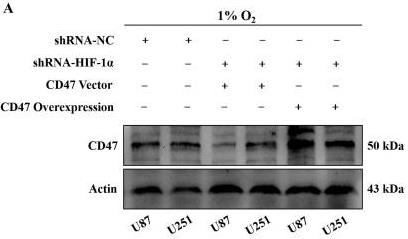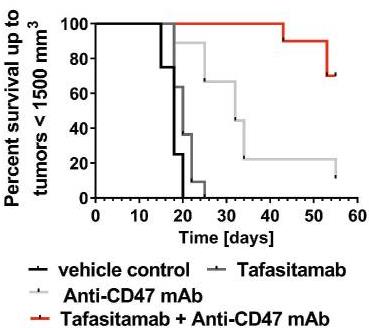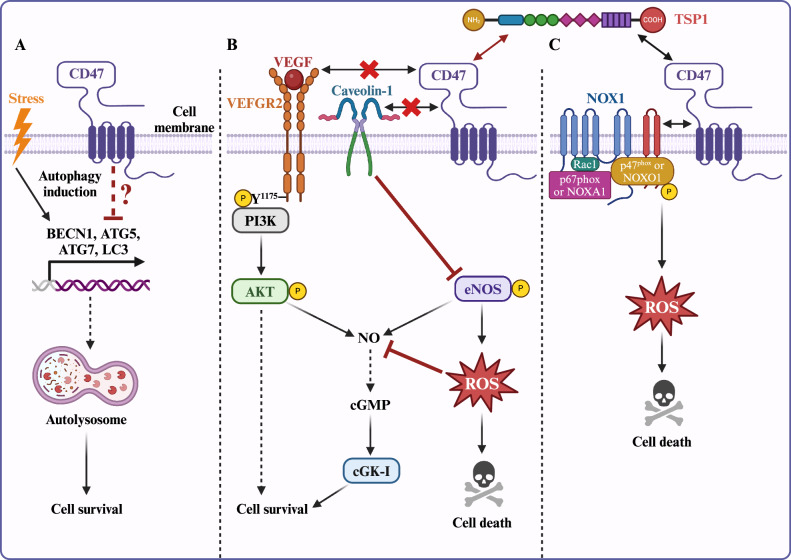Recombinant Human CD47 protein, His-tagged
| Cat.No. : | CD47-7862H |
| Product Overview : | Recombinant Human CD47 protein(Q08722-1)(Gln19-Pro139), fused with C-terminal His tag, was expressed in HEK293. |
| Availability | April 21, 2025 |
| Unit | |
| Price | |
| Qty |
- Specification
- Gene Information
- Related Products
- Case Study
- Application
- Download
| Species : | Human |
| Source : | HEK293 |
| Tag : | His |
| Protein Length : | Gln19-Pro139 |
| Tag : | C-His |
| Form : | Lyophilized from 0.22μm filtered solution in PBS (pH 7.4). Normally 5% trehalose is added as protectant before lyophilization. |
| Bio-activity : | Immobilized Human CD47, His Tag at 2μg/ml (100μl/well) on the plate. Dose response curve for Human SIRP alpha, hFc Tag with the EC50 of 82.1ng/ml determined by ELISA. |
| Molecular Mass : | The protein has a predicted MW of 14.5 kDa. Due to glycosylation, the protein migrates to 45-60 kDa based on Tris-Bis PAGE result. |
| Endotoxin : | Less than 1EU per μg by the LAL method. |
| Purity : | > 95% as determined by Tris-Bis PAGE |
| Storage : | Reconstituted protein stable at -80°C for 12 months, 4°C for 1 week. Use a manual defrost freezer and avoid repeated freeze-thaw cycles. |
| Reconstitution : | Centrifuge tubes before opening. Reconstituting to a concentration more than 100 μg/ml is recommended. Dissolve the lyophilized protein in distilled water. |
| Publications : |
Co-coating of receptor-targeted drug nanocarriers with anti-phagocytic moieties enhances specific tissue uptake versus non-specific phagocytic clearance (2017)
|
| Gene Name | CD47 CD47 molecule [ Homo sapiens ] |
| Official Symbol | CD47 |
| Synonyms | CD47; CD47 molecule; CD47 antigen (Rh related antigen, integrin associated signal transducer) , MER6; leukocyte surface antigen CD47; antigen identified by monoclonal 1D8; antigenic surface determinant protein OA3; CD47 glycoprotein; IAP; integrin associated protein; OA3; Rh related antigen; Rh-related antigen; integrin-associated protein; integrin-associated signal transducer; CD47 antigen (Rh-related antigen, integrin-associated signal transducer); MER6; |
| Gene ID | 961 |
| mRNA Refseq | NM_001777 |
| Protein Refseq | NP_001768 |
| MIM | 601028 |
| UniProt ID | Q08722 |
| ◆ Recombinant Proteins | ||
| CD47-837H | Recombinant Human CD47 Protein, Fc-tagged | +Inquiry |
| Cd47-647MAF647 | Recombinant Mouse Cd47 Protein, His-tagged, Alexa Fluor 647 conjugated | +Inquiry |
| CD47-7865HAF488 | Recombinant Human CD47 Protein, Alexa Fluor 488 conjugated | +Inquiry |
| CD47-7862H | Recombinant Human CD47 protein, His-tagged | +Inquiry |
| Cd47-647MAF555 | Recombinant Mouse Cd47 Protein, His-tagged, Alexa Fluor 555 conjugated | +Inquiry |
| ◆ Cell & Tissue Lysates | ||
| CD47-1363RCL | Recombinant Rat CD47 cell lysate | +Inquiry |
| CD47-850HCL | Recombinant Human CD47 cell lysate | +Inquiry |
Case 1: Tan Q, et al. J Cancer. 2025
Glioblastoma (GBM) is a tough brain tumor with a poor prognosis, mainly because it can grow and spread aggressively. The low oxygen levels in GBM help the tumor cells grow, spread, and resist treatment. This study highlights how proteins like HIF-1α and CD47 are overly active in GBM. High levels of these proteins are linked to shorter survival times for patients. It turns out, HIF-1α and CD47 seem to boost each other in GBM. Experiments showed that altering levels of HIF-1α and CD47 affected how fast the cancer cells could grow and spread, with HIF-1α controlling important pathways that help the tumor adapt and thrive.

Fig1. Western blot of CD47 protein expression in GBM.

Fig2. Western blot showing CD47 protein expression in GBM.
Case 2: Biedermann A, et al. Haematologica. 2024
Macrophages are vital in helping treatments like tafasitamab work against diffuse large B-cell lymphoma (DLBCL), but their effectiveness can be reduced by high CD47 and SIRPα levels on tumors and macrophages, respectively. This study found that blocking CD47 boosts tafasitamab's ability to kill cancer cells. High CD47 and SIRPα levels were observed in lymphoma, hindering macrophage function. Adding an anti-CD47 antibody improved results in lab tests and patient samples, even against low CD19 cells, and led to better outcomes in mouse models.

Fig1. The CRISPR/Cas9 system was used to alter gene expression in Toledo cells.

Fig2. Kaplan-Meier plot showing animal survival until a final tumor volume of 1,500 mm3 was reached.

Fig1. Overview of canonical versus noncanonical CD47 signaling. (Ruhi Polara, 2024)
Not For Human Consumption!
Inquiry
- Reviews
- Q&As
Ask a Question for All CD47 Products
Required fields are marked with *
My Review for All CD47 Products
Required fields are marked with *
Inquiry Basket


